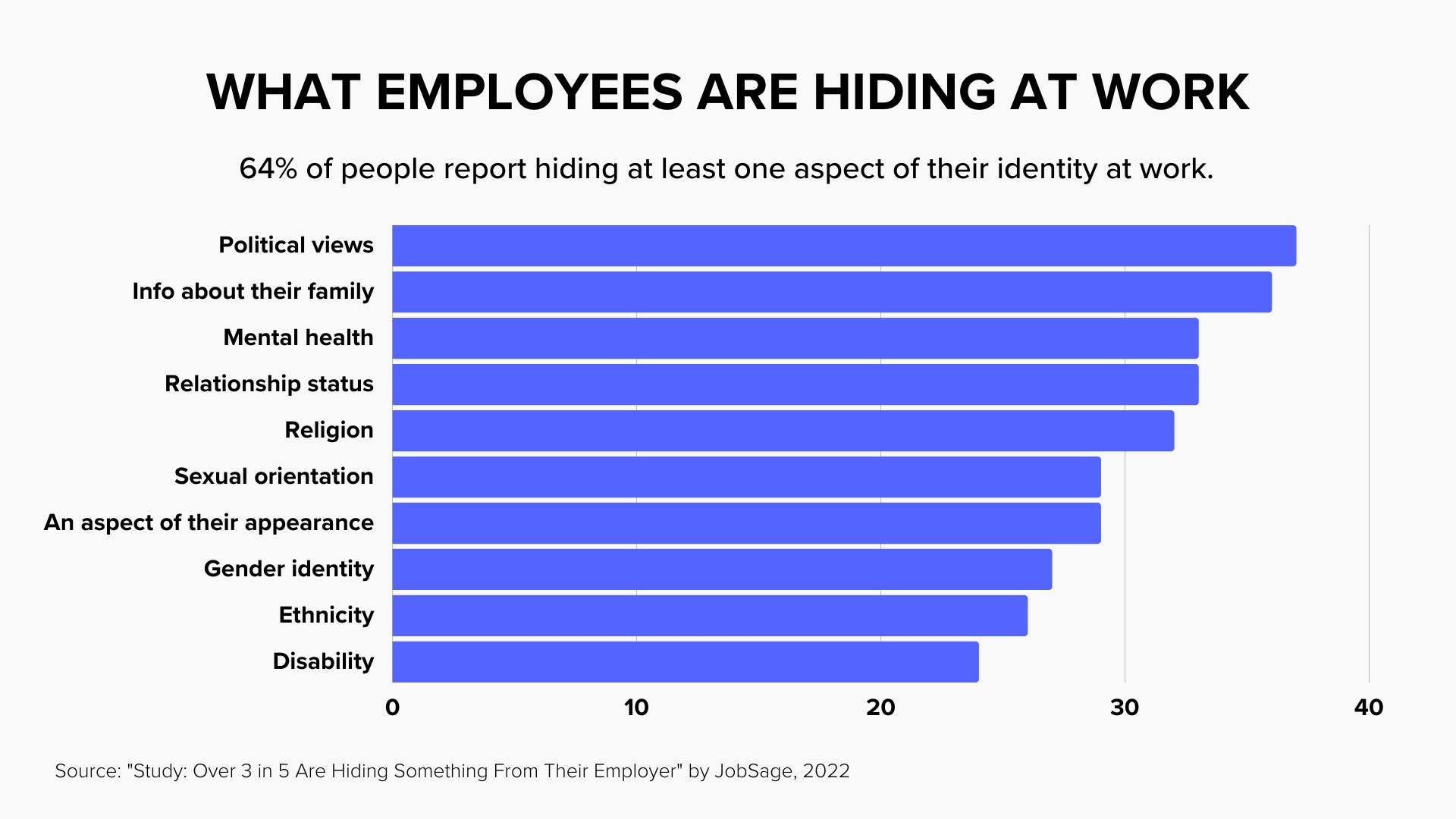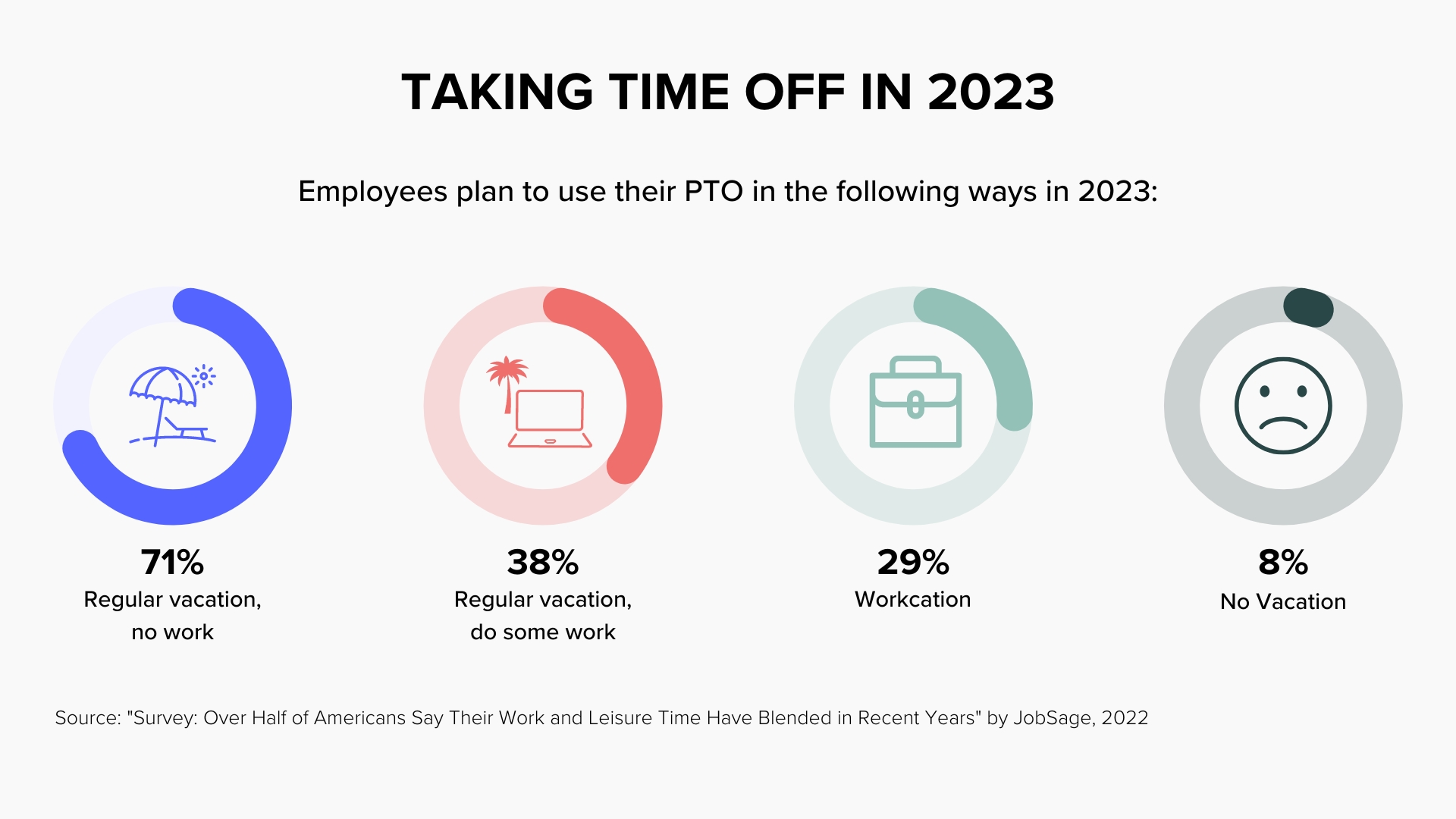Over the past year, JobSage has surveyed jobseekers, employees, and HR professionals to get a better understanding of what is happening in workplaces across the country. Many of our studies centered around workplace culture and employee experiences with topics including mental health, authenticity, friendships, and work-life balance.
As the new year rolls around, keep these statistics in mind. Use them as you think about ways to improve workplace culture and to guide your employee experience initiatives.

Statistics on mental health in the workplace
In April 2022, we conducted a study to learn more about the mental health of employees in the workplace.
The past three years have taken a toll on Americans’ mental health—especially at work. Our study found that:
- More than 1 in 4 employees have quit a job for the sake of their mental health.
- Nearly 2 in 5 employees said work had the worst impact on their mental health, second to finances.
- 1 in 4 employees won’t discuss mental health at work.
- 1 in 5 employees say their company doesn’t do enough for their mental health.
To help curb stress, employees want to see better work life balance, more time off, and greater schedule flexibility from their employers.
To learn more about stress and mental health in the workplace, check out the full study: Survey: More Than 1 in 4 Have Quit a Job Because of Their Mental Health
For many, the source of stress stems from increased workloads. In a separate study, we found that 78% of employees have been given larger workloads without additional compensation— a phenomenon known as quiet promotions.
- 73% have been asked by a manager to take on work above their position
- 68% have had more work than others with the same title
- 67% have absorbed work after a coworker above them left
Nearly 7 in 10 take on these extra responsibilities with the hopes of being promoted. When these expectations aren’t met, it takes a toll on employees and, ultimately, the entire organization.
Stats about authenticity in the workplace
Across the country, many companies are on a mission to create an environment where employees feel welcomed to bring their whole selves to work. They encourage people to be authentic and to act in ways consistent with their identity, values, and beliefs, despite any pressure they might feel to conform.
While authenticity sounds like a positive idea, we wanted to know how it actually plays out in the workplace? We polled employees from around the country to find out whether they feel comfortable being completely authentic in the workplace.
- Even though respondents value being authentic, 64% say they adopt a different personality at work than at home
- Most often, employees hide political views (37%) and information about their families (36%) at work.
- Over half say not being authentic at work impacts their mental health.
- More than 3 in 5 say that after being authentic they were treated differently at work, most often treated unkindly or ignored.

The study also found that individuals belonging to minority groups are more likely to hide aspects of their lives out of fear of being stereotyped or to avoid making others uncomfortable.
For more information on authenticity in the workplace, read Study: Over 3 in 5 Are Hiding Something From Their Employer.
Statistics on friendships in the workplace
Friendships are an important aspect of an employee’s workplace experience. Having a friend at work not only increases an employee’s willingness to stay at a company, but it also has a significant impact on happiness, creativity, and productivity.
For many companies, fostering these relationships and providing opportunities for them to flourish is vital to creating a positive workplace culture. However, with the growing popularity of remote work, this is becoming more difficult.
In exploring how workplace friendship dynamics have shifted, we found that:
- 84% of Americans have a harder time making friends when working remotely
- Fully remote workers report 33% fewer friends at work.
- 66% of remote workers have not made a work friend.
- 95% of Americans say having a friend at work makes them happier.
Read more about the impact of remote work on friendships at Study: Fully Remote Workers Report 33% Fewer Friends at Work.
Statistics on workcations and how employees use PTO
Remote work has changed the way we work— and the way we play— according to our latest study.
The lines between work and vacation have blurred, with two in three Americans reporting that their work and leisure time has blended in recent years. We also found that:
- 59% of Americans don’t like the concept of workcations, yet 81% report working during a vacation.
- 64% have worked from a plane, car, or train on the way to or from vacation.
- 45% have taken shorter vacations because of work pressure.
- 67% of people assume if a coworker is on workcation, they’re not working as hard.
In 2022, 1 in 5 Americans reported using none of their PTO, while 2 in 5 used less than half.
What’s in store for this year? Employers can expect a good chunk of their employees to take a workcation at some point, if it is permitted.

Learn more about Americans PTO habits in our article Survey: Over Half of Americans Say Their Work and Leisure Time Have Blended in Recent Years.
Harness your own data
Not sure where your organization stands on the topics that matter most to your employees? Poll your workforce using JobSage’s intuitive culture survey to get a pulse in areas like inclusion, growth, flexibility, and more.
Our basic culture survey is always free and easy to set up— making it easy for employers to get the data they need to improve.

More content you may find helpful:
